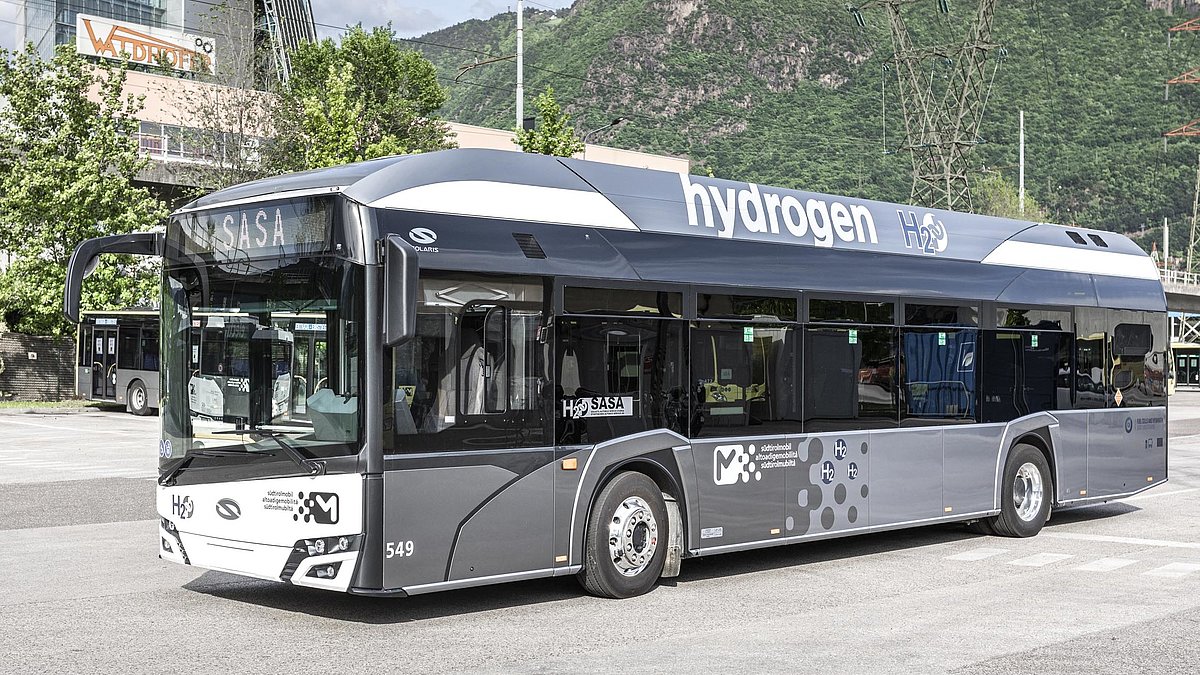They run on hydrogen, produce zero emissions and have a range of around 350 km: Meet the first three of 12 brand-new hydrogen buses for inner-city public transport in Bolzano/Bozen.
Sustainability – the key to a fresh start
“Innovation, sustainability and the intelligent use of local resources are pivotal at this point,” said Arno Kompatscher, head of the provincial government of South Tyrol, at the launch of the buses. Years of research and targeted projects have put South Tyrol at the forefront of this technology, he continued. In addition, as Regional Minister for Mobility Daniel Alfreider added, South Tyrol has long been involved in a number of successful European projects and is part of an active European network for a more sustainable and livable future: “We focus on the production of green hydrogen, especially when aiming for zero-emission mobility in local public transport, but also with a view to freight transport”, he added, listing the shift to rail traffic, digitalisation and the use of low-emission vehicles as cornerstones for all future-orientated development in mobility.
SASA Director Petra Piffer explained that the strategy is to convert a large portion of the SASA bus fleet to sustainable vehicles, i.e. battery- and hydrogen-powered buses, by 2030. While these technologies are particularly suitable for inner-city transport, the new buses are also being tested for use outside the city centre, she added. The purchase of the new vehicles is co-financed by 30 percent through the EU project JIVE.
How the new buses work
Built by Solaris, the new vehicles join a team of five fuel-cell-powered bus prototypes that have been in use throughout Bolzano/Bozen since 2013 and are operated by SASA, an in-house company of the provincial government. The “Solaris Urbino 12 hydrogen” is a state-of-the-art emission-free vehicle that combines a high-performance fuel cell and a high-power lithium-titanate battery with 29.2 kilowatt hours. It is equipped with an electric drive axle and two electric motors on the wheels with a maximum output of 125 kilowatts each. The power of the fuel cell amounts to 70 kilowatts, and the capacity of the hydrogen tank is 37.5 kilograms for more than 350 kilometres’ worth of driving per day. And the only “emission” produced is water vapour which is generated during the journey at around 55° C. Some 300 such hydrogen buses are currently in operation or have been ordered throughout Europe.
